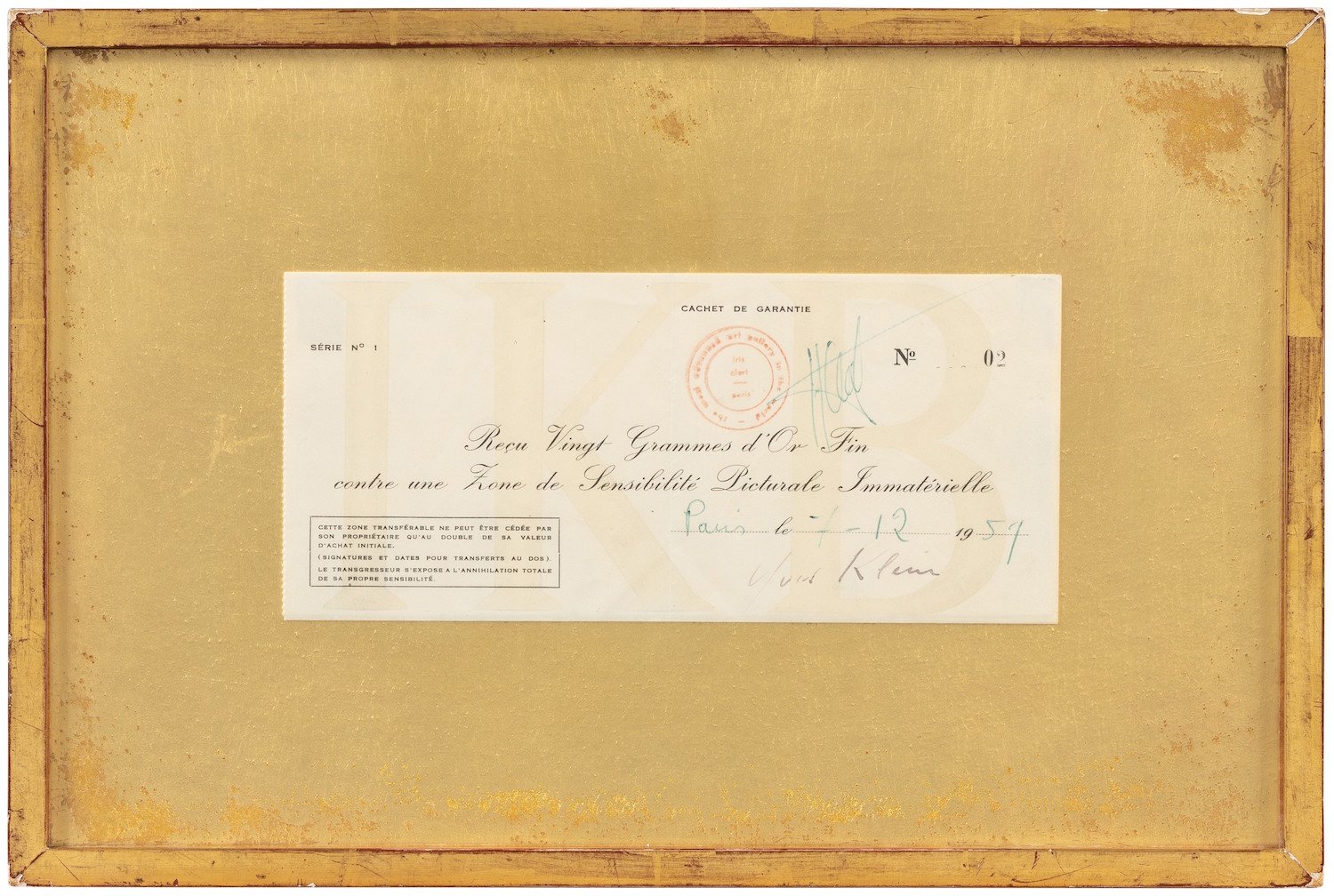
An invisible artwork by Yves Klein just sold for more than $1 million at Sotheby’s in Paris.
Well, sort of. On the auction block was a paper receipt for a “Zone de sensibilité picturale immatérielle,” or a “zone of empty space,” a 1959 conceptual creation by the French artist. The lot, which carried a guarantee, hammered down at €850,000 ($927,300), far surpassing its €280,000 to €500,000 ($305,000–$545,000) estimate. After fees, the price for the object exceeded €1,060,000 ($1.2 million).
According to Sotheby’s, the buyer was a “private European collector.”
Klein sold several such invisible “zones”—each instantiated by a receipt—between 1959 and his death in 1962, accepting only pure gold as payment. Usually, the exchange occasioned a ritual: the purchaser of the artwork would burn the receipt while Klein himself would drop half of the gold into the Seine river. The act, according to the artist, “rebalanced the natural order” between buyer and seller.
For this reason, few of Klein’s receipts exist today. The example that sold in Paris was originally acquired by Paris dealer Jacques Kugel, who opted to hold on to the certificate rather than burn it. (In this case and others in which the buyer chose to preserve the receipt, Klein repurposed the gold for his Monogolds series of sculptures.)
Today, the receipt was included in a Sotheby’s sale dedicated to the collection of French collector and art adviser Loïc Malle, who purchased the piece of paper 35 years ago. Among the other notable pieces featured in the sale were an ink-on-paper drawing by Philip Guston, which went for €491,000 ($534,000), and a Robert Morris Ruler sculpture, which fetched €378,000 ($411,000).
The auction house likened Klein’s receipt to a proto-NFT—a nonphysical artwork represented only by a certificate of ownership. Doubling down on that connection, for this sale the auction house announced it would welcome payments in cryptocurrency at its Paris branch for the first time. (Sotheby’s claimed to be the first major auction house to accept cryptocurrency for a physical work of art in May 2021, when it offered up a Banksy painting for Bitcoin or Ether in one of its flagship evening auctions in New York.)
Representatives from the auction house said it was “too early to say” whether the Klein’s buyer plans to pay with crypto.
The empty-space zones weren’t Klein’s only dalliance in invisible art. In 1958, at Iris Clert’s gallery in Paris, the artist staged a show called “Le Vide (The Void).” When some 3,000 visitors arrived for the opening, they were met with a vacant room.
On a more contemporary tip, last year the Italian artist Salvatore Garau went viral after selling an “immaterial sculpture”—which is to say, nothing—for €15,000 ($18,300).